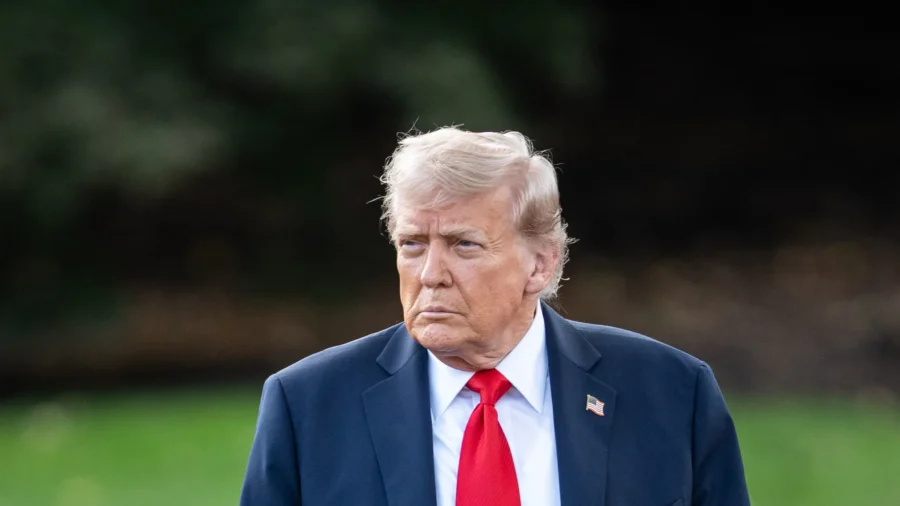
President Donald Trump said on Sept. 13 that he is prepared to impose new sanctions on Russia, but only once all NATO allies commit to halting purchases of Russian oil, tying the move to a broader plan that also includes steep tariffs on China.
“I am ready to do major Sanctions on Russia when all NATO Nations have agreed, and started, to do the same thing, and when all NATO Nations STOP BUYING OIL FROM RUSSIA,” Trump wrote.
“Anyway, I am ready to ‘go’ when you are. Just say when?”
He said that a unified embargo, combined with tariffs on China in the range of 50 to 100 percent, would quickly end the war in Ukraine by cutting off Russia’s economic lifelines.
“This is not TRUMP’S WAR (it would never have started if I was President!),” Trump added.
“I am only here to help stop it, and save thousands of Russian and Ukrainian lives.”
Trump’s post came after a call on Friday with G7 finance ministers, where Treasury Secretary Scott Bessent and U.S. Trade Representative Jamieson Greer pressed allies to match Washington’s tariffs on countries buying Russian oil.
Sanctions Pressure Builds
Trump’s statement follows remarks he made at the White House on Sept. 7, when he signaled a readiness to advance a second phase of sanctions against Moscow.
After Russia hit Ukraine with one of the largest barrages of drones and missiles of the war, a reporter asked Trump if he was prepared to respond with sanctions, to which the president replied: “Yeah, I am,” though he did not provide additional details.
Talk of a sanctions escalation came after Russia unleashed more than 800 drones and missiles in what Kyiv described as the largest aerial assault of the war, killing four and wounding dozens.
Ukrainian President Volodymyr Zelenskyy urged nations to stiffen economic pressure on the Kremlin, calling for “tough tariffs and other restrictions on trade.”
Tariffs on China and India
Trump has already escalated trade penalties against India, doubling tariffs to 50 percent in late August over its rising imports of Russian crude. He has also floated tariffs of up to 100 percent on both China and India, pressing European officials to adopt a similar approach during a Sept. 9 conference call with EU sanctions envoy David O’Sullivan.
If implemented, the step would represent a change in the EU’s strategy, which until now has leaned on sanctions to isolate Russia, rather than tariffs.
China responded to Trump’s suggestion that Brussels slap tariffs on Beijing in a Sept. 10 statement, in which the Chinese foreign ministry rejected what it called “so-called economic pressure.”
India has defended its imports as a matter of energy security, noting its reliance on foreign oil and accusing Western nations of hypocrisy for continuing to buy Russian goods such as enriched uranium.
Frustration Over Talks
The tariff threats come amid the U.S. president’s push for an end to the war by encouraging direct peace talks between Putin and Zelenskyy, with the White House hosting both leaders separately last month.
While Trump has vowed to “put the two of them in a room,” the Ukrainian side has rejected Moscow’s insistence that any summit take place in Moscow.
“He [Putin] can come to Kyiv.”
Putin, for his part, said in Vladivostok that he remained open to negotiations, but cast doubt on Ukraine’s readiness, pointing to martial law and alleged political dysfunction in Kyiv.
For now, Trump is holding back his most forceful economic measures until NATO moves in lockstep.
“If NATO does as I say, the war will end quickly,” he wrote in his Truth Social post.
“If not, you are just wasting my time, and the time, energy, and money of the United States.”


